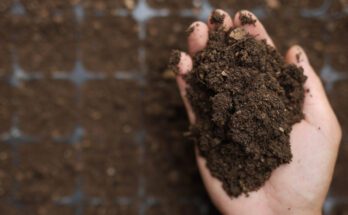This story appeared in the September/October 2020 of Discover magazine as “The Ecology of Dumb.” We hope you’ll subscribe to Discover and help support science journalism at a time when it’s needed the most.
As you get closer to Earth’s poles, seasonal swings in temperature and vegetation get increasingly drastic. In many places, snowy winter wastelands alternate with relatively lush summers. That can make life hard for birds, unless they can cope with the weather — and their food sources — changing throughout the year. Birds that can’t handle it migrate to warmer climes for the winter. Those that tough it out year-round tend to have big brains relative to their body size, which help them figure out how to manage life in the changing landscape — or so scientists had thought.
But Trevor Fristoe, who grew up in Alaska, knew that small-brained birds could also thrive in such environments. An avid birder, Fristoe is an ecologist and evolutionary biologist at the University of Konstanz in Germany. In a recent study, he found how small-brained birds can fare well near the poles: Rather than relying on big brains, some instead specialize their diets, eating only plants that are hard to digest but available throughout the winter. Discover asked Fristoe about the insights that led to this discovery. — Geoffrey Giller

Trevor Fristoe. (Credit: Gretchen Garcia)
Q: What made you wonder whether these extreme environments might also favor small-brained birds?
A: I lived through winters [in Alaska] where you can go outside and it’s almost post-apocalyptically cold. You would see these big-brained birds up there; ravens were the most conspicuous animals around. While you were running from your car, you’d see a raven picking through garbage bags in the back of a pickup truck or eating French fries, finding ways to survive in this super-extreme environment. But you can also find ptarmigans and spruce grouse, these guys that are really representative of small-brained groups. I wanted to look at that. Were these just rare exceptions to the general pattern, or is there something else there going on? We had a code name for this line of questions: the ecology of dumb.
Q: How did your experience as a birder help you develop these questions?
A: For me, it’s really important to know the system I’m working with. You have to go out there and experience it in order to understand the patterns you’re getting from the data or to ask the right questions.

Some birds, like the willow ptarmigan in Alaska, may have adapted to survive cold winters by having big guts instead of big brains. (Credit: Trevor Fristoe)
Q: So how do those “dumb” birds survive?
A: Spruce grouse can persist entirely by eating spruce needles and twigs throughout the winter. But to digest those types of foods, you need a really large gut — and the gut is another energy-intensive tissue. So, the idea was that you can’t have both — it should be very difficult to maintain both your very large gut and a very large brain. We found that that was true.
Q: How does this work fit into your broader research?
A: Really what unites everything is I’m very fascinated by what determines the distribution of species across the planet. Why do you find this organism in this environment but not in that environment?


